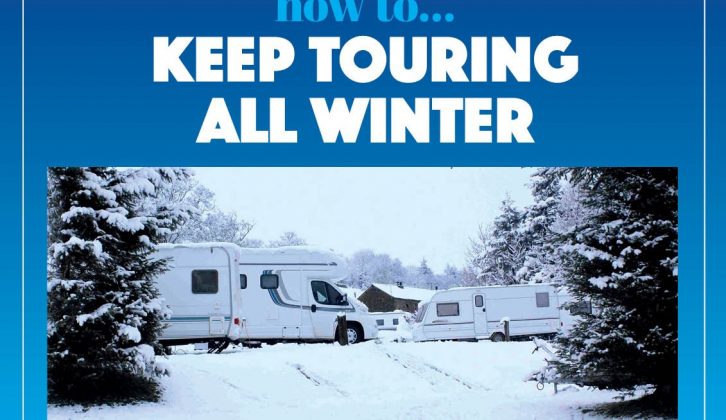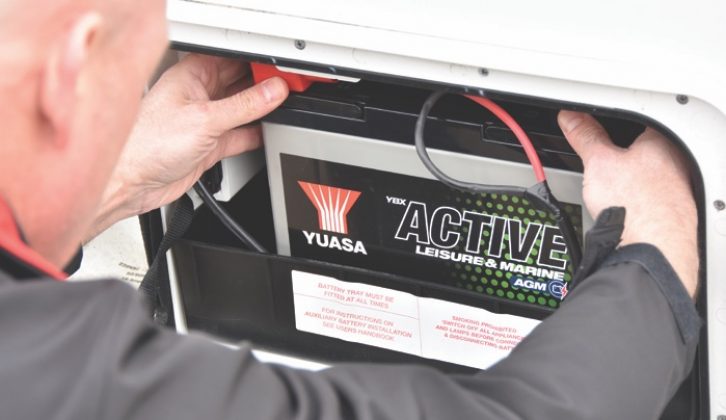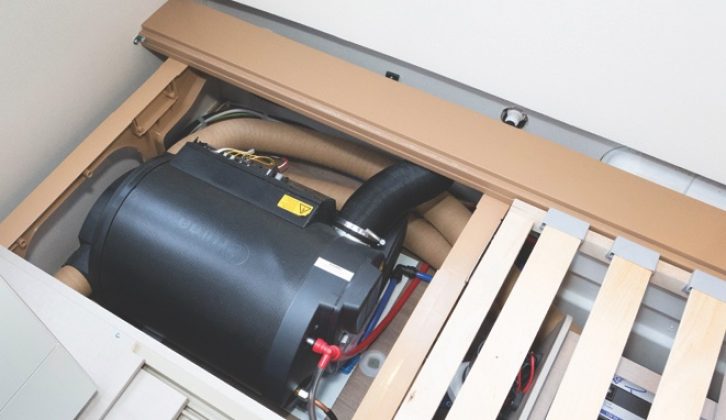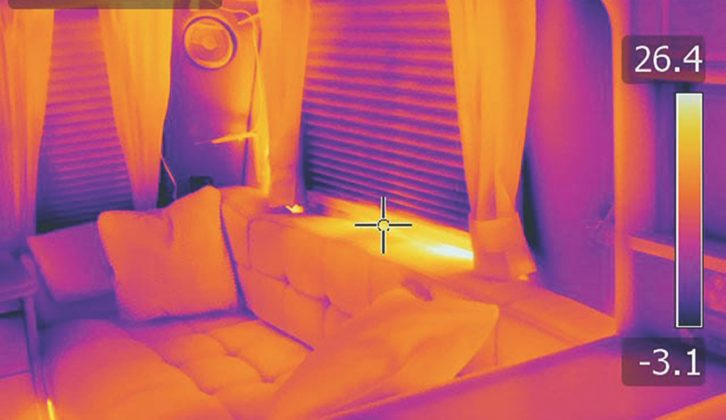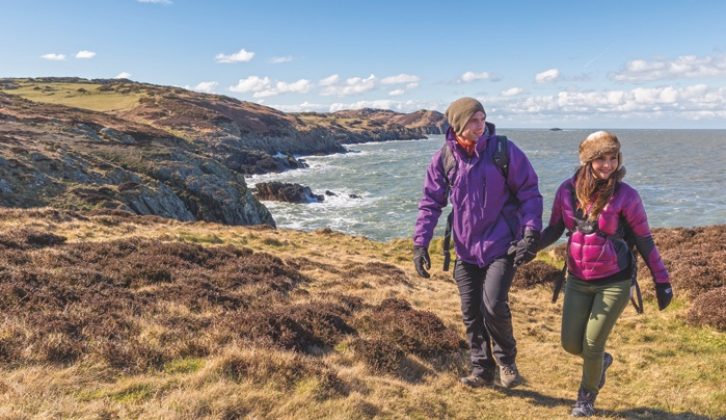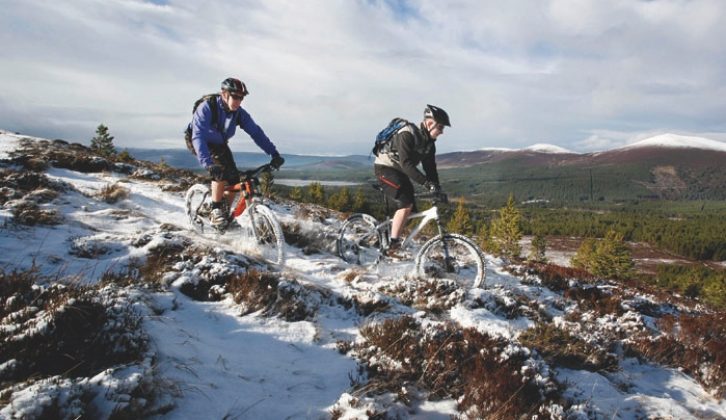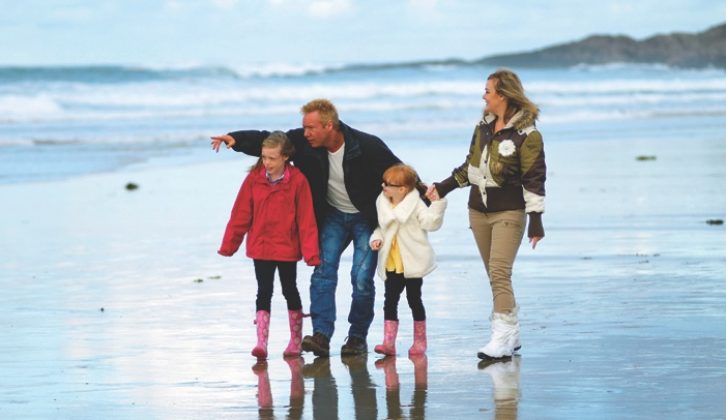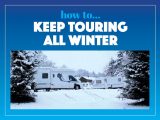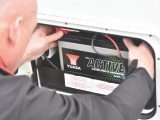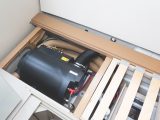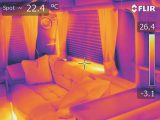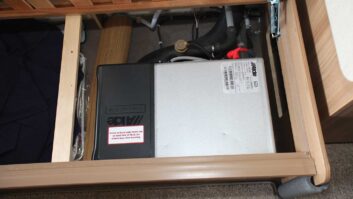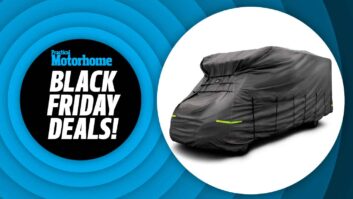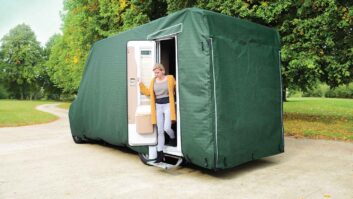You no longer need to have the fortitude of Captain Scott to be an all-year-round motorcaravanner. Almost all modern vehicles have incredible insulation and heroic heating, which make four-season touring not just possible, but a positive pleasure.
There are plenty of benefits to all-year touring, too: sites are emptier (so you get the best pitches and views), popular attractions are quiet, and cold-but-sunny winter days can be unbeatable. Plus, there are all those magnificent Christmas markets and events to savour.
I’ve been winter touring since 2011, and the only problem I’ve ever had is being too hot to sleep in the ‘van!
So 2020 is the year to ‘max’ your investment and sample that wonderful feeling of being warm and cosy in your motorhome, while the weather does its worst outside. Here’s how…
Pick the right ‘van
Most motorhomes are now suitable for all-year touring. Some might reckon Continental models unbeatable for this purpose, but we’d suggest that you consider every suitably insulated and heated vehicle.
Unlike the summer months spent basking outside your motorhome, from October to April, you will mostly be inside, so select a ‘van with sufficient space to live comfortably indoors – this might preclude tiny two-berths.
Pick a light and airy motorhome to make the most of minimal daylight in winter. Modern ‘vans usually feature large windows, and many are also fitted with sizeable rooflights.
Likewise, good ambient-, mood- and spot-lighting can really enhance an interior. Many models do it brilliantly. It’s good to factor some ‘illuminated thinking’ into your decision.
Heating
There’s an excellent choice of heating systems in motorhomes. Most function on gas and electricity, and combine the two for maximum output.
Truma and Whale make blown-air heating systems. These pipe hot air from a heater through ducting and distribute it around the motorhome.
Alde meanwhile, uses a wet system. Rather like domestic central heating, hot water is pumped around the vehicle to radiators hidden behind the furniture and warm the interior.
Both systems have their devotees. Some motorcaravanners believe that blown-air heating can leave cold spots around the ‘van, so they prefer the ‘all-encompassing’ heat from the Alde radiator system. I’ve never found this, and I like the speed with which blown-air can heat an interior.
Alde needs more maintenance, has a potential risk of leaking, is heavier and costs more, but it is quieter, and you also get heated towel rails with this system, which is a bonus.
Whale has a clever heater unit, mounted under the floor of the motorhome to save space.
Winter tourers should check their ‘van doesn’t have any exposed heating ducts underneath, because this will greatly affect the performance of the heater in very cold weather. Internal ducting is best and can also be further insulated to raise performance levels.
All three systems also heat the motorhome’s hot water and feature LED control panels inside the ‘van.
Cleverly, Truma and Alde systems can also be controlled remotely, using an app on a digital device. As long as you can get a Wi-Fi or 4G signal, you can turn on the heating or hot water from anywhere, using Truma’s iNet or Alde’s Smart Control. This way you get back to a lovely warm ‘van, with plenty of hot water on tap for that reviving shower.
Clearly, heating choice is pretty much down to personal preference, so you might want to research them all, then talk to friends who tour.
Draughts, cold spots
If your motorhome feels draughty, don’t be tempted to block off the drop-out vents in the floor.
These are crucial to allow the escape of heavier-than-air propane and butane gases, should you have a leak. Instead, consider insulating the floor areas under the beds and sofas and in the cupboards, with carpet or some specialist insulation material.
Wheel arches and gas-locker bulkheads are often left uninsulated, and these might benefit from having some additional lagging, too.
Gas choice
LPG is the most effective source of heat when you are out in your motorhome. It delivers up to 6kW of energy, compared with electricity, which achieves 2kW or 3kW where the site supply allows.
For touring in winter, it’s essential to choose propane gas rather than butane. Propane vaporises (turning from a liquid to a gas) at temperatures down to -42ºC, whereas butane stops ‘gassing’ at -2ºC.
Calor and Flogas supply propane gas bottles (red in colour), while the refillable specialists, Safefill and Gaslow, use the Autogas that you can buy on many filling-station forecourts (including Morrison’s supermarket).
Autogas can be a mix of butane and propane, although in the UK, it is 100% propane all year round (www.mylpg.eu). Be mindful that if you refilled your gas bottles abroad in the summer, your gas mix might not be ideal for a UK winter.
Whichever gas you decide to use, don’t underestimate consumption in winter and consider taking a spare bottle along with you.
Regular winter tourers can make huge savings by buying Autogas at 46p per litre, rather than pre-bottled gas at £2 per litre.
Leisure batteries
You’ll use more power in winter, thanks to lower temperatures, shorter days and more time spent indoors. Consider upgrading the leisure battery to allow for this.
A 100Ah leisure battery is ideal, remembering that batteries do not perform as well in cold temperatures.
There’s little point insulating your battery, as it will have no effect during extended cold periods.
It might also take it longer to warm back up when the sun comes out. Shorter winter days and the low sun will make solar panels significantly less effective, too.
Picking a pitch
Off-grid camping is possible in winter, but its demands on gas and electric supplies make it more challenging.
When staying on a standard site, it’s worth selecting a hardstanding pitch with hook-up, though avoid tripping out the EHU.
If possible choose a pitch that’s easily accessible, where you don’t have to drive across grass (universally recognised as the most slippery surface to drive on when wet).
Although a level pitch might not drain well, manoeuvring onto a slope can be tricky. We’ll let you decide!
If you park under trees, that shower might continue dripping on the roof. There’s also the possibility of damage if any branches are blown off.
Useful accessories
A porch awning is a good idea if you tour a lot in winter, especially if you love outdoor pursuits. Awnings create an ‘airlock’, where you can remove wet gear without letting out the heat. A compact air or pole awning can suffice, making sure it is pegged securely. On a frozen pitch, a cordless drill can be used with a long, 4mm-diameter masonry bit to create a guide hold for tent pegs.
Condensation
Condensation is less of a problem these days. The key is keeping the motorhome warm and maintaining airflow.
Dehumidifying crystals are fairly ineffective in our experience, while mains-powered dehumidifiers are much better, but expensive, and they need emptying. Keep a towel handy for mopping windows and ensure your mattress is on a breathable surface – wooden slats, not solid plywood.
Driving in snow and ice
Avoid driving in very bad weather if at all possible, but if you do need to take to the road…
- Plan your route carefully, avoiding dangerous roads and regions. Google Street View can be useful when you are planning.
- Decrease your speed.
- Look further ahead up the road for hazards.
- Stopping distances are increased in standing water, ice or snow, so leave significantly greater distances between you and the vehicle in front. We recommend turning the two-second rule into the three- or four-second rule.
- Make all driving inputs such as steering and braking, more gentle and gradual than normal.
- If your wheels lock when braking, ease off the brake and try doing this again – gently.
- Keep your lights on all the time. But only use fog lamps when it’s foggy.
- Check your wiper blades and ensure that your washer bottle is filled with a suitable mix for the temperatures that are expected.
- If you experience a lot of wheel spin, consider setting off in second gear.
- Think about fitting your motorhome with winter tyres – this is a legal requirement in some European countries. A minimum of 4mm tyre tread is recommended.
- Carry a pair of ‘traction mats’, for added grip in slippery conditions. You can find them online from £12, made by companies including Fiamma.
- Take a good-quality de-icer spray with you, and pack a windscreen cover, so you can avoid all of that unnecessary windscreen chiselling in the morning!
Top Tips
- Chances are, your ‘van will be an oasis of tropical heat in Britain’s icy winter, but be prepared, and take extra clothes: thick socks, warm pyjamas and a sweater. A Tog 12 duvet and a hot-water bottle are good ideas, too.
- Plastic covers can be obtained to partially cover external fridge vents in very cold weather.
- Toilet chemicals can freeze, so store them inside, or use sachet or tab-style chemicals instead.
- Keep your washroom well heated and – horror of horrors – leave the toilet seat up to minimise the chances of the toilet freezing up.
- Fit a carbon monoxide detector.
- Avoid condensation creating mould in your mattress. When leaving the motorhome for the day, consider raising the sprung bed base to allow warmer air to circulate all around the mattress.
- Make sure that your motorhome is serviced annually, in particular ensuring the heating systems are properly maintained.
- Be conservative when showering in the ‘van, to avoid long delays while the water reservoir reheats.
- Lag all of the motorhome’s external waste pipes with split-foam lagging and gaffer tape in place.
- Using electric heating at night always fells safer than relying on gas.
- Carry a small tool kit, a torch and spare fuses for the motorhome’s DC supply.
- Always plug your cable into the motorhome first, then the hook-up post. This way you’re not carrying a live cable in potentially wet weather. When decamping, unplug from the post first.
- Keep your electric cable dry. If forced to link two cables, invest in a weatherproof cover to protect the join, and keep off the ground.
Almost all modern vehicles have incredible insulation and heroic heating, which make four-season touring not just possible, but a positive pleasure
